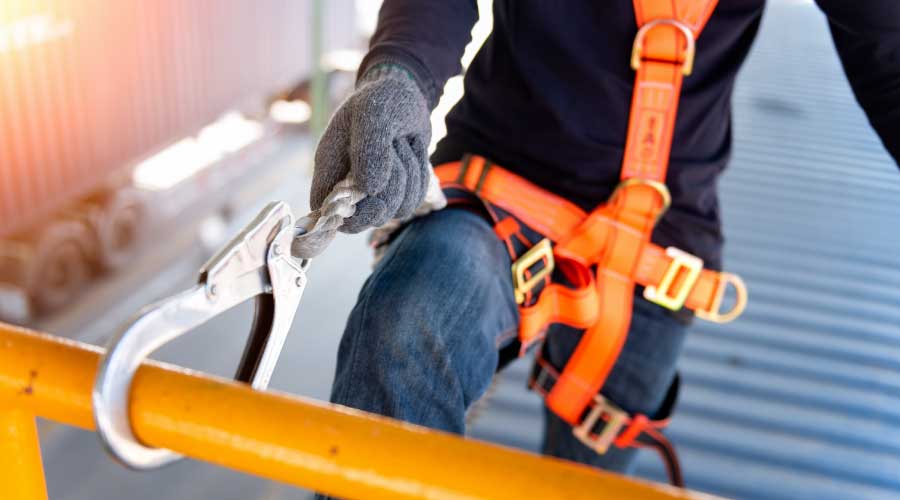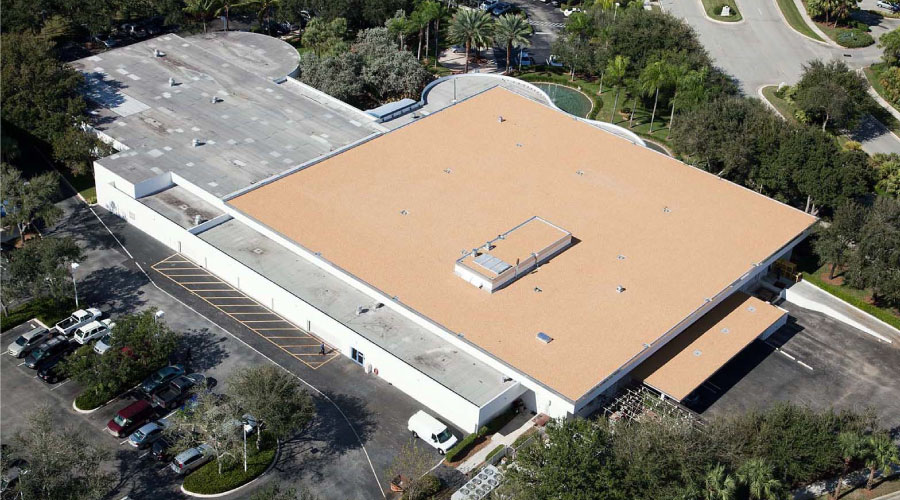Mind the Metal on the Roof
All roofs have to end somewhere. Either they terminate at a wall, parapet, expansion joint, metal edge or a tie-in with another roof. In all cases, where the roof ends, there is a weak link. Walls and parapets require vertical flashings. The flashings are generally attached at the top to keep them from sliding down the wall. The flashing attachment is usually screws, concrete fasteners, nails, or some other fastener fastened through a termination bar — a flat strip of metal with pre-punched holes. Termination bars are supposed to provide attachment along its entire length because it will continuously press against the wall. The reality is that termination bars are rarely stiff enough to stop from bending where the fasteners go through. Throw the unevenness of most wall construction into the mix and the result can be flashings that are well attached at the fasteners and loose between them.
Most roof membrane manufacturers understand that this is a weak point in the roof and require a counter-flashing. A counter-flashing is a material, usually metal but occasionally membrane, that covers the upper edge of the flashing to divert water away from it. If the counter-flashing is not properly installed, water can get behind it and the membrane flashings. The counter-flashing has to sufficiently overlap the flashings so that wind-driven rain cannot get under it to the top of the flashing. The metal has to be lapped horizontally and sealed so that the path the water travels does not go behind the lap.
Finally, the metal has to be compatible with the other materials on the roof. On an asphalt roof, a problem can occur where surface mounted counter-flashings are installed after the base flashings are in place. Because mopping asphalt is not a precision operation, the asphalt usually gets slopped up to where the counter-flashing will be installed. The counter-flashing will require a sealant to be applied at the top. Roofing contractors almost always use a polyurethane sealant to do this. The problem is that polyurethane sealants and roofing asphalt are chemically incompatible, and the asphalt will cause the polyurethane sealant to discolor, harden and crack.
On any roof type, if the counter-flashing is to be inserted into a reglet (a slot in the wall), the compression material to hold it in has to be securely inserted or the counter-flashing will become loose and will allow water into the roof.
Metal Edges
Where there are no parapets, the roof terminates in a metal edge. Metal will expand and contract with thermal changes at a different rate than will the membrane attached to it. This becomes a weak point on the roof because, eventually, the roofing membrane will crack because of material fatigue. In the case of thermoplastics, special coated metals have to be used to give the membrane something to which it can attach. If the coated metal is not used, the membrane will come loose. Because the wind stresses are greatest at the edges of the roof, there's the possibility of a blow off. If too few fasteners are used to attach the metal edge, the possibility of a blow off is also greater. If the gauge of the metal used is not thick enough to keep the metal from bending, the metal edge can peel back in a windstorm.
The best way to reduce the possibility of problems with the metal edge is to be sure that it is designed, fabricated and installed according to building code and the Sheet Metal and Air Conditioning Contractors National Association (SMACNA) Architectural Sheet Metal Manual.
These problems are just a sample of the considerations that need to be addressed in designing, installing and maintaining a roof. A good understanding of how a roof actually works and knowledge of the strengths and limitations of the different types of roofing systems is essential for the long-term performance of any roof system. The roof system should be designed with the particular building in mind, not just which is cheapest. It should be installed according to the highest industry standards. Once it is on, regular maintenance can extend the life of the roof for its full designed service life. All three are needed to be sure the weakest link is not the one between facility managers' ears.
Karen Warseck, AIA, is president of Building Diagnostics Associates, a Hollywood, Fla., architecture firm. She is a contributing editor for Building Operating Management.
Related Topics:














